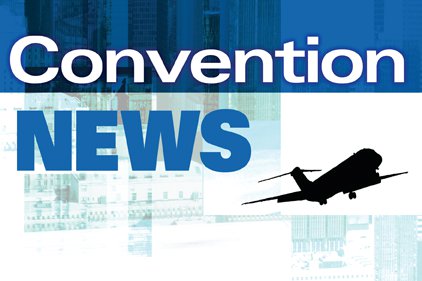ISHN conducted an exclusive interview with Kathy Seabrook, ASSE’s outgoing president, who has had her bags packed for a year as she has traveled the country and the globe on safety missions.
ISHN: You’ve traveled the globe in the past year as ASSE president. How do you compare company safety cultures in developed nations versus developing nations?
Kathy Seabrook: There is no real simple answer. It’s best to cut the world into different industries. Look across industry sectors. You see different levels of practice in say the pharmaceutical industry, in multinational versus indigenous companies.
I was just in India, Tata Motors and Reliance Industries are multinational Indian companies. Their attitude about safety is the same as for large multinational companies in China, Kuwait, Qatar. All these companies are on the world stage. They are all looking for best practices. They have pretty impressive sustainability reports. They are really looking at risk-based approaches to health and safety. They are all looking at their safety cultures, at a continuous improvement model. The oil and gas industry has been at this for years. You now have whole supply chains aligned with safety and safety assurance. The multinationals have their reputations on the line. They are on the world stage.
In developing countries it’s a continuous improvement journey. They’re starting where we in the U.S. were 100 years ago with their indigenous companies. But companies that know they are part of a global supply chain, they have to do more.
With OSHA standards-setting at a crawl’s pace, do you see the in future U.S. safety pros needing to keep abreast of international developments, such as the ISO safety and health standard?
Absolutely safety pros need to keep abreast. OHSAS 18001 is the default safety and health management standard around the world until ISO 45001, the new occupational health and safety management system, is finalized probably in the beginning of 2017.
I’d also point to the GHS standard. The key is that the market drove GHS long before the U.S. embraced it into their regulations. That’s a key point with global standards. The world marketplace is driving harmonization, so the U.S. has to follow. This is how the world is evolving. These are voluntary standards, but the key is they are a risk-based approach to safety and health. There is the need for third-party validation, especially if a company is part of a supply chain.
The customer stakeholder is really starting to drive the use of voluntary standards and best practices. Customers expect organization to go above and beyond compliance.
Define a risk-based approach to safety and health.
In the past, an organization identified its hazards and what controls they had on their hazards. They would look at the hierarchy of controls and maybe say, we can only use PPE. And that would be that. A risk-based approach aligns OSH with the business concept of risk. The business community gets risk, gets materiality. Consumer goods supply chains deal in the flow, the trade of materials. Once you identify your hazard and control measure, you use a matrix to determine the likelihood that the hazard is a low, medium, or a high risk to cause a degree of severity. It’s the likelihood of something happening that is risk-based. Is there a hazard? Yes. Is it controlled? Yes. Next, what’s the risk? You can have all these hazards and evaluate all these controls, but what does it mean to the organization? You’ve got to prioritize the hazard. What is the risk of an injury, illness or fatality? Then you’ll have priority risks. Large multinationals do risk assessments -- they are the foundation of a management system. The key for ISO 45001 is to be scalable so small businesses can manage risk. If they understand the concept of risk, then they can prioritize.
Businesses deal with risk every day. There is the risk of losing brand loyalty, of losing investor confidence, of damaging your reputation. When you talk about risk, it’s the language of business. We as the safety profession need to align ourselves with business’s understanding of risk.
What’s the single most important international safety and health development in the past year that U.S. safety professionals need to be aware of, and to be knowledgeable about?
I would point to two things. First there is sustainability and the safety professional’s role in their organization around sustainability. In the way organizations measure sustainability there is a section for labor, which includes workplace safety and health. Safety and health is considered part of an organization’s sustainability. There is the opportunity for safety to be front and center in this whole issue.
The other key development is ISO 45001 In past 25 years it is probably one of most important standards to be undertaken. It will be developed by reviewing standards from around the world, and will replace OHSAS 18001as the de facto global safety and health management system standard. The committee draft will come out in late summer 2014, at the end of July or the beginning of August. Every safety pro will have access to it and be able to make comments on it. The U.S. Technical Advisory Group (TAG) to the ISO 45001 standards-setting has almost 100 members on it. Companies want to influence the outcome and understand what the differences will be b tween 18001 and 45001
With the Baby Boomer ranks of safety pros retiring over the next 5-10 years, do you see the upcoming generation of pros, now in their 20s and 30s, having any kind of different attitude or approach to overseeing workplace safety and health?
The generation in their 20 to early 30s is very adaptable to change, because ever thing around them keeps changing fast and furious. Facebook keeps changing formats. This generation says,” I’ll adapt, don’t fight it.”
Boomers grew up in work environments where loyalty was key; that has changed during the career of boomers. Folks in their 20 or 30s know they need to manage their own careers. They are looking for certifications, for MBAs. Companies won’t manage careers anymore. This generation following the boomers sees a much broader picture. It is looking more closely at transferrable skills since they may be in a job only five years or so.
Plus they are coming up in such a competitive environment. It makes getting certified important, whatever edge they can get is important.
This group of course doesn’t’ blink an eye about technology, in terms of apps and devices.
The other thing is this 20s and 30s generation is very environmentally oriented. It’s been driven into them throughout their education. Schools compete to be the most sustainable, they compete around LEED. I don’t have to tell my kids to turn off the lights.
Any other comments you would like to make after surveyed the safety profession from the ASSE’s president’s perch for a year?
The challenge to our profession is to educate ourselves. We need to embrace risk, lean manufacturing, six sigma, sustainability, and insert safety within these business aspects, because safety has a role to play.
One of the greatest insights from my travel is that safety is safety anywhere in world. A safety pro is a safety pro anywhere in the world. We all have the same passion for change, the same sense of mission; we are all working toward the same end. Globalization allows us to harmonize around the world, without being exactly the same.
A global competence framework is now being worked on to create harmonization around technical safety skills, the business skills professionals need, skills in communications, negotiations , making presentations. This framework would be a global framework, with countries agreeing that this is what a safety professional should know. Each country will adopt and customize the scope and knowledge for safety pros, but the principle will be the same in the UK, in Australia, Taiwan, wherever. This is very positive. It impacts a safety pro’s ability to transfer knowledge and expertise. Develop some sort of niche skill set that you have, and then expatriate it. If you have a CSP, it will be transportable. It will be a competitive advantage around the world. It’s all coming together.




